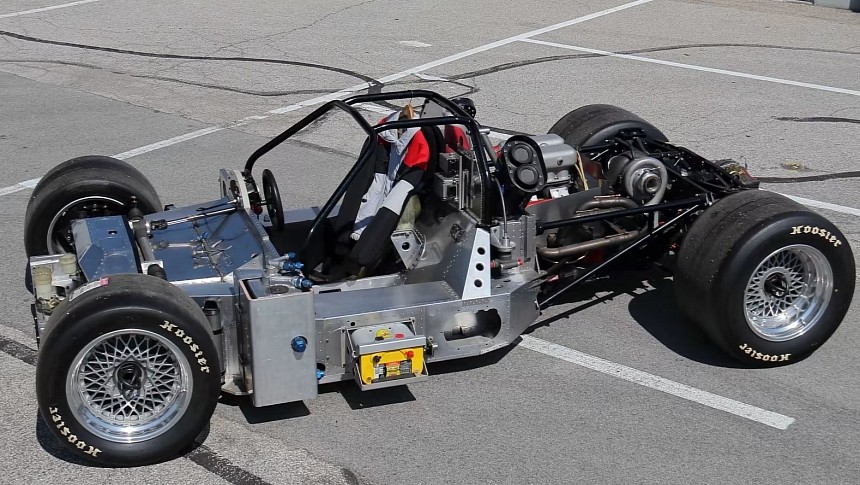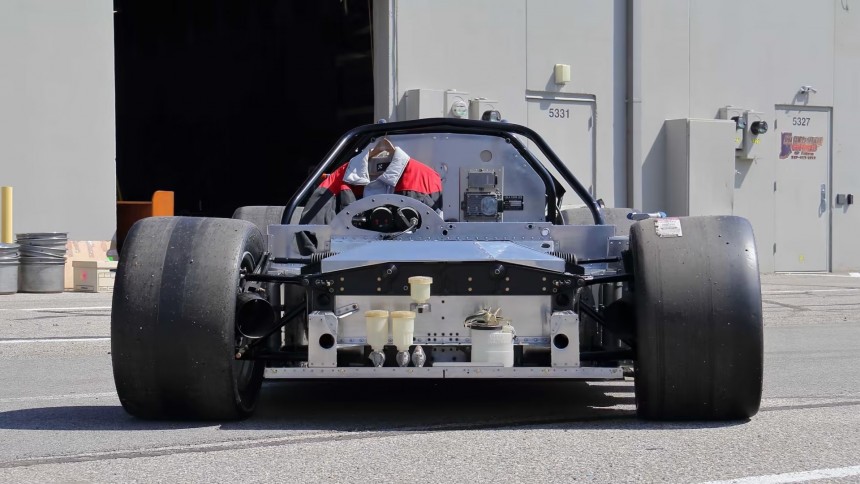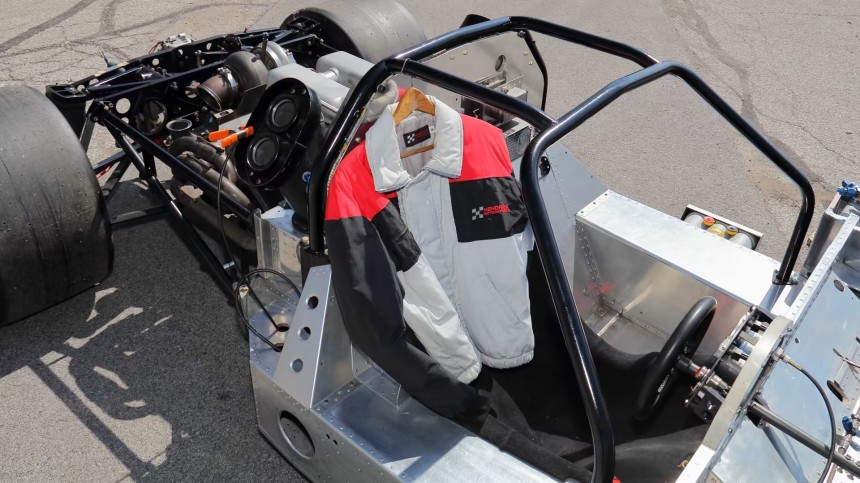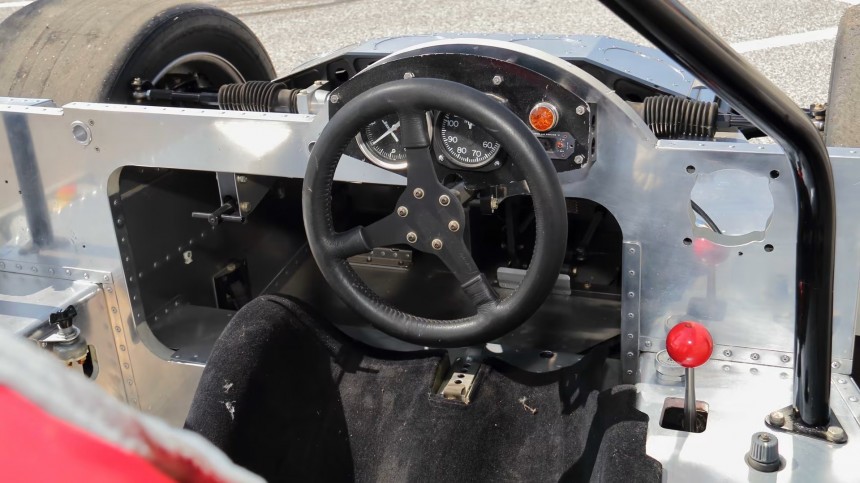The Chevrolet Corvette GTP (Grand Touring Prototype) race cars developed in the 1980s to compete in the GTP class of the International Motor Sports Association (IMSA) GT Championship were some of the fastest and most exotic Chevrolet-branded vehicles ever made.
General Motors' Chevrolet Corvette C4 race engineering team partnered with Lola Cars International, a British racing car manufacturer with extensive expertise in building race-winning prototypes, to develop the race car. Both turbocharged V6 and naturally aspirated V8 versions were made, and they shone bright in the IMSA Camel GT from 1984 until 1989.
Based on a Lola T600 chassis and equipped with a turbocharged Chevy V6, the first racer model was made to resemble a Chevrolet Corvette C4, with a lightweight, aerodynamic carbon-fiber body that was similar at the front and featured a long pontoon-style tail at the back. It also had large lateral intakes to vent the radiator and a snorkel feeding the turbocharger.
Chevrolet’s intention was to promote its small block V6 racing engine with this new racing car. The turbocharged Chevy V6 mill made no less than 900 hp in the 1,950-pound car, which was an impressive amount in a vehicle as lightweight as this.
After a successful first full season for the car in 1985, General Motors decided to make two new chassis for 1986. These subsequent models had shorter tails and a dual-element rear wing. The Corvette GTP program continued until the end of the 1988 season, and in total, seven prototype sports cars were built. Each chassis was given a different designation and number, with the 10 in the chassis number indicating a version with the turbocharged V6, while 11 meant it was V8-powered. They were highly competitive cars and snatched two race wins and seven pole positions in four seasons.
However, apart from the mighty engine, there was nothing particularly spectacular about the race car. Standard componentry was used in building it, including a rear suspension with standard Indy-type, pushrod shock system and a front suspension mounted to the monocoque Kevlar and aluminum honeycomb chassis. Cooling was a main concern with these cars, and one of them turned to ashes in 1988. This was also the year when GM decided to cut funding for the Corvette GPT program, although the cars were actually starting to become more consistent and reliable after the team managed to overcome their mechanical failures. The use of the naturally-aspirated V8 had something to do with this.
It may not seem like it, but the chassis you see in the gallery above is one of the race-winning prototype sports cars that successfully competed in the IMSA series as a 1986 Chevrolet Corvette. It has had its body removed, and now it just looks like a mid-engined go-kart. Only it's not a regular go-kart you see at your local karting track, but one with a turbocharged race engine said to be capable of 1,000 hp. In its heyday, it was a true beast that scored a win in the 1986 season at the deft hands of the Hendrick Motorsports team at Road Atlanta.
The GPT Corvettes represented GM’s attempt to put the Chevrolet name on the road racing map and take on the IMSA GPT leaders of the eighties, including Jaguars, Porches, Nissans, and Mazdas. The initial racing car hid under its hood a 3.4-liter V6 built by Ryan Falconer. This was basically a destroked version of the 4.3-liter Chevrolet V6 with a series of performance changes that boosted its output to 1,000 hp when fully tuned. The mill was connected to a Hewland five-speed manual transmission sending power to the rear wheels.
The particular model in question here was driven to victory by Sarel van der Merwe and Doc Bundy in the IMSA competition. Right now, it is missing its original C4 Corvette-inspired body, and basically, what you see is what you get. However, all the parts and components necessary to make it work and look like it used to in its racing days are still there.
One of its former owners was Gordon Barrett, who worked on the GPT cars during their IMSA racing days.
The go-kart-looking prototype race car is now up for sale and is set to go under the hammer in mid-May. It is offered with a slew of original body parts, some crates of mechanical parts, new and used spare windscreens, headlights, six sets of wheels, and Hoosier racing tires.
Without its body panels, the car looks like the most entertaining go-kart on earth, but if you are eager to take on a project car of this kind, it might prove to be a satisfying endeavor.
The auction lot also includes vintage Hendrick Motorsports apparel, GM Goodwrench Corvette postcards, and some framed photographs signed by Rick Hendrick and Sarel van der Merwe. You can watch this very chassis with its body on, winning the 1986 IMSA GTP race at Road Atlanta, in the video below.
Based on a Lola T600 chassis and equipped with a turbocharged Chevy V6, the first racer model was made to resemble a Chevrolet Corvette C4, with a lightweight, aerodynamic carbon-fiber body that was similar at the front and featured a long pontoon-style tail at the back. It also had large lateral intakes to vent the radiator and a snorkel feeding the turbocharger.
Chevrolet’s intention was to promote its small block V6 racing engine with this new racing car. The turbocharged Chevy V6 mill made no less than 900 hp in the 1,950-pound car, which was an impressive amount in a vehicle as lightweight as this.
However, apart from the mighty engine, there was nothing particularly spectacular about the race car. Standard componentry was used in building it, including a rear suspension with standard Indy-type, pushrod shock system and a front suspension mounted to the monocoque Kevlar and aluminum honeycomb chassis. Cooling was a main concern with these cars, and one of them turned to ashes in 1988. This was also the year when GM decided to cut funding for the Corvette GPT program, although the cars were actually starting to become more consistent and reliable after the team managed to overcome their mechanical failures. The use of the naturally-aspirated V8 had something to do with this.
It may not seem like it, but the chassis you see in the gallery above is one of the race-winning prototype sports cars that successfully competed in the IMSA series as a 1986 Chevrolet Corvette. It has had its body removed, and now it just looks like a mid-engined go-kart. Only it's not a regular go-kart you see at your local karting track, but one with a turbocharged race engine said to be capable of 1,000 hp. In its heyday, it was a true beast that scored a win in the 1986 season at the deft hands of the Hendrick Motorsports team at Road Atlanta.
The particular model in question here was driven to victory by Sarel van der Merwe and Doc Bundy in the IMSA competition. Right now, it is missing its original C4 Corvette-inspired body, and basically, what you see is what you get. However, all the parts and components necessary to make it work and look like it used to in its racing days are still there.
One of its former owners was Gordon Barrett, who worked on the GPT cars during their IMSA racing days.
Without its body panels, the car looks like the most entertaining go-kart on earth, but if you are eager to take on a project car of this kind, it might prove to be a satisfying endeavor.
The auction lot also includes vintage Hendrick Motorsports apparel, GM Goodwrench Corvette postcards, and some framed photographs signed by Rick Hendrick and Sarel van der Merwe. You can watch this very chassis with its body on, winning the 1986 IMSA GTP race at Road Atlanta, in the video below.
























